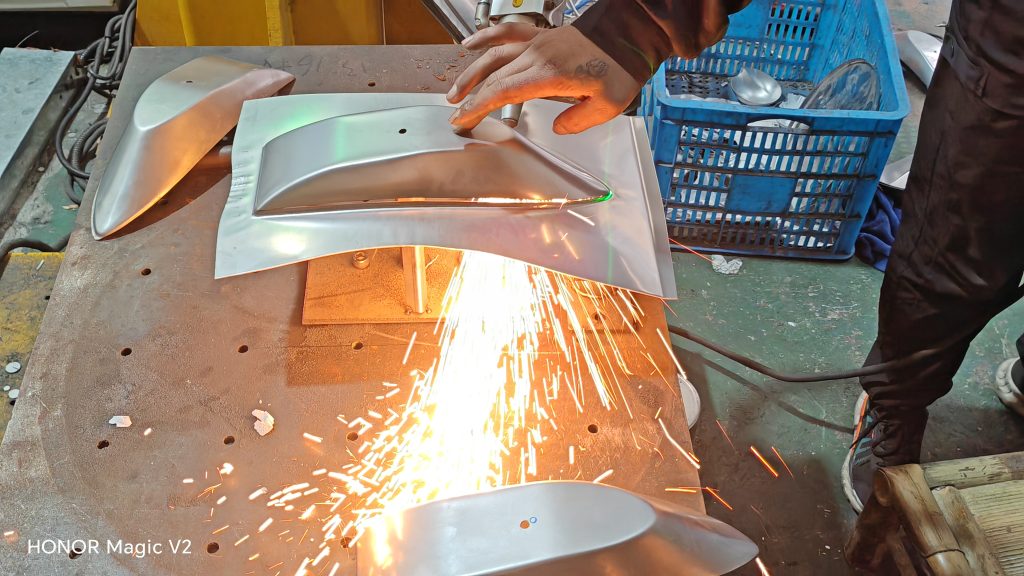
Stainless Steel 3D Laser Cutting: Precision in the Modern Age
In the ever-evolving landscape of metal fabrication, precision and efficiency reign supreme. One cutting-edge technology that has revolutionized the industry is stainless steel 3D-laser cutting. This advanced process combines the durability of stainless steel with the accuracy of laser technology, paving the way for intricate designs and complex geometries in various applications.
In the field of metal forming processing, forming surface cutting in stamping, hydraulic drawing and CNC spinning processing must be inseparable from metal 3D-laser cutting. Altron can provide a complete metal processing service.

I. Introduction to 3D-Laser Cutting
Stainless steel, renowned for its corrosion resistance and strength, has been a staple in industries ranging from aerospace to healthcare. Traditional cutting methods often fall short when it comes to achieving intricate shapes and maintaining material integrity. Enter 3D laser cutting, a transformative technique that surpasses its conventional counterparts.
A. Understanding the Basics of 3D Laser Cutting
Laser cutting involves the use of a high-powered laser to melt, burn, or vaporize material. In 3D laser cutting, this process extends into the third dimension, allowing for the creation of complex three-dimensional shapes. The precision and speed of lasers make them ideal for working with stainless steel, a material known for its toughness.
B. Advantages of Stainless Steel in 3D Laser Cutting
Stainless steel’s unique properties make it an excellent candidate for 3D laser cutting. Its resistance to corrosion, heat, and wear, coupled with its aesthetic appeal, positions it as a preferred material for a myriad of applications. The marriage of stainless steel and 3D laser cutting opens up possibilities in industries where precision is paramount.
II. The Technology Behind 3D Laser Cutting
A. Laser Cutting Systems
Modern laser cutting systems consist of a laser source, focusing optics, a nozzle, and a CNC (Computer Numerical Control) system. The laser source emits a concentrated beam of light, and the CNC system controls the direction and intensity of the laser, allowing for precise cuts according to programmed designs.
B. Fiber Laser vs. CO2 Laser
In the realm of 3D laser cutting, two types of lasers dominate the scene: fiber lasers and CO2 lasers. Fiber lasers, utilizing optical fibers as the medium for beam delivery, excel in cutting reflective materials like stainless steel. CO2 lasers, on the other hand, boast versatility but may struggle with highly reflective surfaces.
C. Laser Cutting Parameters
The effectiveness of stainless steel 3D laser cutting hinges on carefully calibrated parameters. Factors such as laser power, cutting speed, focal length, and assist gases play pivotal roles in achieving optimal results. Fine-tuning these parameters ensures clean cuts and minimizes heat-affected zones, preserving the integrity of the stainless steel.
III. Applications of Stainless Steel 3D Laser Cutting
A. Aerospace Industry
In aerospace engineering, precision is non-negotiable. Stainless steel 3D laser cutting enables the fabrication of intricate components for aircraft and spacecraft. From turbine blades to structural elements, the technology ensures tight tolerances and impeccable surface finishes.
B. Automotive Sector
The automotive industry leverages 3D laser cutting for crafting components that demand both strength and precision. From exhaust systems to intricate body panels, manufacturers rely on this technology to enhance the durability and aesthetic appeal of their vehicles.
C. Medical Equipment Manufacturing
The healthcare sector benefits from the precision offered by 3D laser cutting in the production of medical devices. Surgical instruments, implants, and diagnostic equipment demand the highest standards, and this cutting-edge technology delivers on those requirements.
D. Architectural Applications
Architects and designers are increasingly turning to 3D laser cutting to bring their visions to life. The technology allows for the creation of intricate facades, decorative elements, and structural components, adding a touch of modernity to architectural designs.
IV. Challenges and Solutions
A. Edge Quality and Smoothness
Achieving a smooth edge finish is crucial in many applications. Stainless steel’s high reflectivity poses a challenge, often resulting in rough edges. Advanced laser systems with precise control mechanisms and optimized cutting parameters mitigate this issue, delivering clean and polished edges.
B. Material Thickness Limitations
While 3D laser cutting excels in precision, it may face limitations with extremely thick stainless steel. Innovative solutions involve multi-pass cutting and the use of specialized nozzles to address the challenges posed by thicker materials, ensuring consistent quality across various thicknesses.
C. Heat-Affected Zones
Excessive heat during the cutting process can lead to undesirable alterations in material properties. Employing advanced cooling systems, such as nozzle design enhancements and optimized assist gas delivery, minimizes heat-affected zones, preserving the structural integrity of stainless steel components.
V. Future Trends and Innovations
A. Integration of AI in Laser Cutting
As technology advances, the integration of artificial intelligence (AI) into stainless steel 3D laser cutting processes is on the horizon. AI algorithms can analyze cutting conditions in real-time, optimizing parameters for enhanced efficiency and precision. This intelligent automation holds the promise of further elevating the capabilities of laser cutting systems.
B. Enhanced Laser Sources
Ongoing research and development focus on improving laser sources, aiming for higher power levels and increased beam quality. These advancements contribute to faster cutting speeds, improved edge quality, and expanded capabilities in handling a broader range of stainless steel thicknesses.
C. Eco-Friendly Practices
The push towards sustainability is influencing manufacturing processes, including 3D laser cutting. Efforts to reduce energy consumption, implement eco-friendly assist gases, and optimize material usage are becoming integral parts of the industry’s commitment to environmental responsibility.
VI. Conclusion
Stainless steel 3D laser cutting stands at the intersection of strength and precision, reshaping the landscape of metal fabrication across diverse industries. As technology continues to evolve, the marriage of stainless steel and laser cutting promises even greater possibilities, ensuring that the future of manufacturing remains as cutting-edge as the processes driving it.
ALTRON‘s 3D laser cutting Services:
WhatsApp: +8615627397226
E-mail: info@auto-altron.com
Stainless Steel 3D Laser Cutting: Precision in the Modern Age

Metal spinning machine capabilities

Robot Welding

Polishing Surface1

3D laser cutting product gallery
